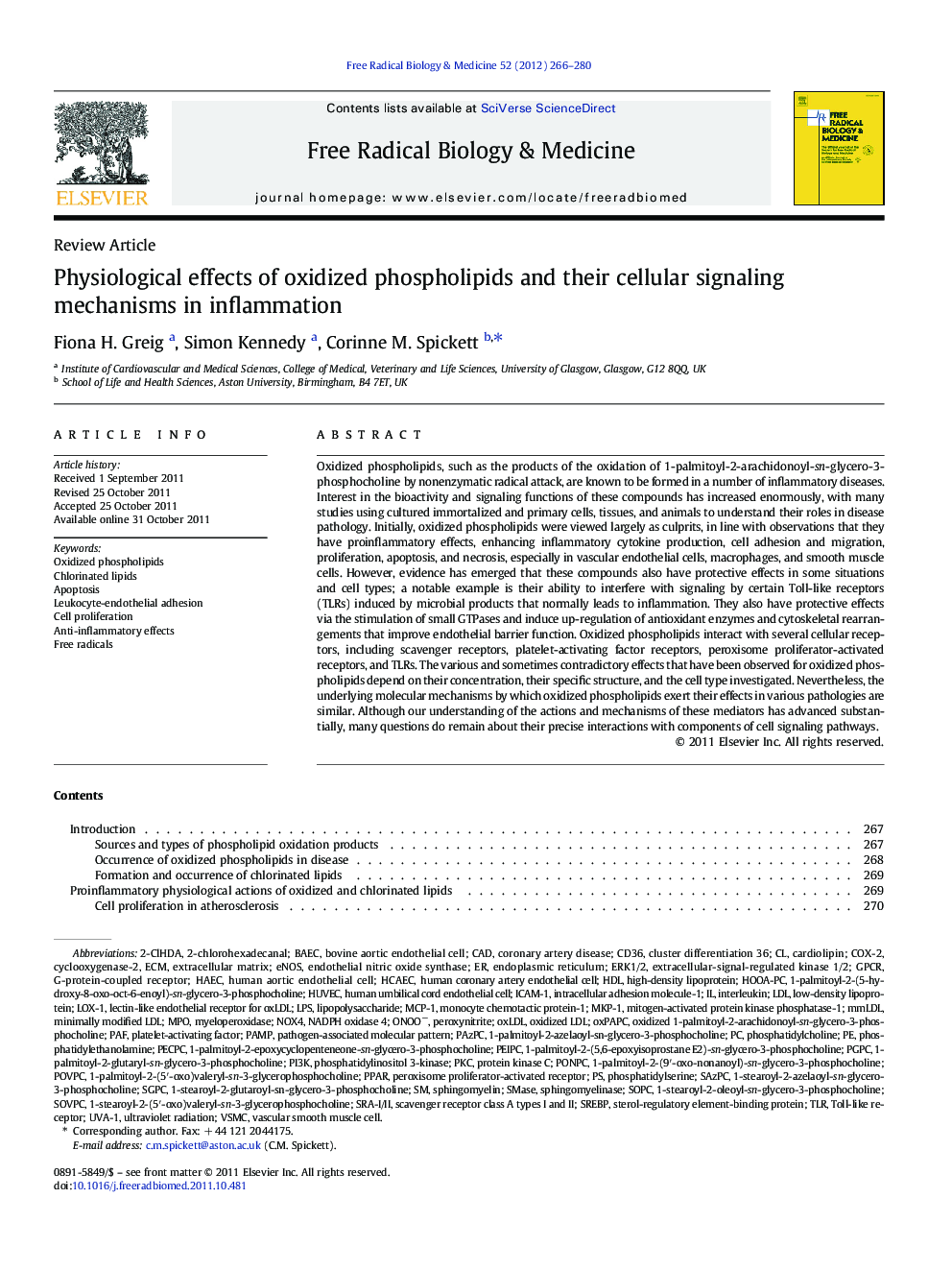| کد مقاله | کد نشریه | سال انتشار | مقاله انگلیسی | نسخه تمام متن |
|---|---|---|---|---|
| 1908928 | 1046694 | 2012 | 15 صفحه PDF | دانلود رایگان |

Oxidized phospholipids, such as the products of the oxidation of 1-palmitoyl-2-arachidonoyl-sn-glycero-3-phosphocholine by nonenzymatic radical attack, are known to be formed in a number of inflammatory diseases. Interest in the bioactivity and signaling functions of these compounds has increased enormously, with many studies using cultured immortalized and primary cells, tissues, and animals to understand their roles in disease pathology. Initially, oxidized phospholipids were viewed largely as culprits, in line with observations that they have proinflammatory effects, enhancing inflammatory cytokine production, cell adhesion and migration, proliferation, apoptosis, and necrosis, especially in vascular endothelial cells, macrophages, and smooth muscle cells. However, evidence has emerged that these compounds also have protective effects in some situations and cell types; a notable example is their ability to interfere with signaling by certain Toll-like receptors (TLRs) induced by microbial products that normally leads to inflammation. They also have protective effects via the stimulation of small GTPases and induce up-regulation of antioxidant enzymes and cytoskeletal rearrangements that improve endothelial barrier function. Oxidized phospholipids interact with several cellular receptors, including scavenger receptors, platelet-activating factor receptors, peroxisome proliferator-activated receptors, and TLRs. The various and sometimes contradictory effects that have been observed for oxidized phospholipids depend on their concentration, their specific structure, and the cell type investigated. Nevertheless, the underlying molecular mechanisms by which oxidized phospholipids exert their effects in various pathologies are similar. Although our understanding of the actions and mechanisms of these mediators has advanced substantially, many questions do remain about their precise interactions with components of cell signaling pathways.
Figure optionsDownload high-quality image (178 K)Download as PowerPoint slideHighlights
► The formation and occurrence of oxidized and chlorinated phospholipids in disease.
► Pro-inflammatory physiological actions of modified phospholipids including apoptosis.
► Effects of modified phospholipids on endothelial function and leukocyte binding.
► Investigating the importance of receptor types in modified phospholipid signalling.
► Anti-inflammatory effects of oxidized phospholipids through Toll-like receptors.
Journal: Free Radical Biology and Medicine - Volume 52, Issue 2, 15 January 2012, Pages 266–280